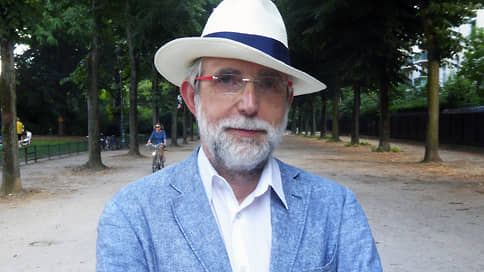Not a pavilion, but an empty place
[ad_1]

Russia will represent Bolivia in Venice. The Italian Il Giornale dell’arte and its Russian sister The Art Newspaper Russia reported that at the biennale starting on April 20, an exhibition of South American artists will open in the pavilion belonging to our country. This is already the third absence of Russia at the international exhibition of art and architecture.
The National Pavilion, built by architect Alexey Shchusev, is already 110 years old. The role of pavilions owned by states at the Biennale is special. In essence, these are diplomatic representations of national art. With a regime of artistic extraterritoriality.
While at the Venice Festival directors and selectors can decide whether to accept films from Russia into competition, space in the Shchusev pavilion is managed by a team of artists and curators appointed by the country’s Ministry of Culture. If the Olympic Committee does not allow Russian athletes to compete under the national flag – first due to a doping scandal, and then due to international sanctions – the Arts Olympics in Venice has its own “Russian stadium”, which belongs to the state-foreign property of the Presidential Administration.
During the existence of the biennale, founded in 1895, there have been many changes in the structure of national pavilions – in tune with the changing political map of the world. Only in our memory, the border between the Czech Republic and Slovakia seemed to pass through the Czechoslovak pavilion, and the Yugoslav pavilion suddenly turned out to be a container for seven independent countries. The pavilion, built by the Russian Empire, was inherited by the Soviet Empire and later by the Russian Federation. Other countries that were once part of the USSR were forced to look for other sites in Venice. But this important diplomatic art representation for many years after perestroika depended more on the generosity of private individuals than on state institutions. This allowed many famous contemporary artists to exhibit here, such as Grisha Bruskin, Vadim Zakharov, Ilya Kabakov, Maxim Kantor, Andrei Monastyrsky, Irina Nakhova.
Since 2021, the Ministry of Culture has set a course for state patronage and for winning influence and prizes in Venice, just like at the Olympics. Commissioners and curators were replaced. As Western critics commented on this, “the Russians went hunting for the Lion” (“Golden Lion” is the main prize of the Biennale). However, in February 2022, the curator of the Russian pavilion Raimundas Malashauskas and the artists Kirill Savchenkov and Alexandra Sukhareva refused to participate two months before the start of the 59th Art Biennale. The pavilion remained closed from April to November, and the only artistic event associated with it was a protest exhibition – a single picket by the Russian conceptualist Vadim Zakharov living in Germany, who, by the way, represented the Russian Federation at the 2013 Biennale. Russia was not present at the architectural biennale next year either. This won’t be the case in art either.
The owners of the pavilion found themselves in a zugzwang situation. Let’s leave aside the technical problems – visas for participants, transportation of works – everything that was easily solved until the beginning of the 2020s, during the time of the great Russian-Italian artistic friendship, when a new museum in Moscow was built by Renzo Piano, and exhibition spaces of Russian artists opened in Venice funds and galleries.
The more important problems are ideological. Giving the pavilion today to contemporary artists with a position that is often uncontemporary in Russia is dangerous both for the project’s leaders and for the participants themselves: what’s good, their statements will be considered “extremist.” Giving the pavilion to artists of a sharply patriotic nature means causing a scandal and, most likely, encountering retaliatory actions. One can recall the history of 1977, when, in parallel to the official exhibition of the Soviet pavilion, the Biennale organized an exhibition of unofficial art of the USSR and Eastern European countries.
Fortunately, unlike chess, in artistic politics you can miss a move. And to make it less conspicuous, the owners of the pavilion made a gesture towards our hot Latin American friends. Probably, in the current situation, this was the best hardware, highly diplomatic solution.
[ad_2]
Source link






